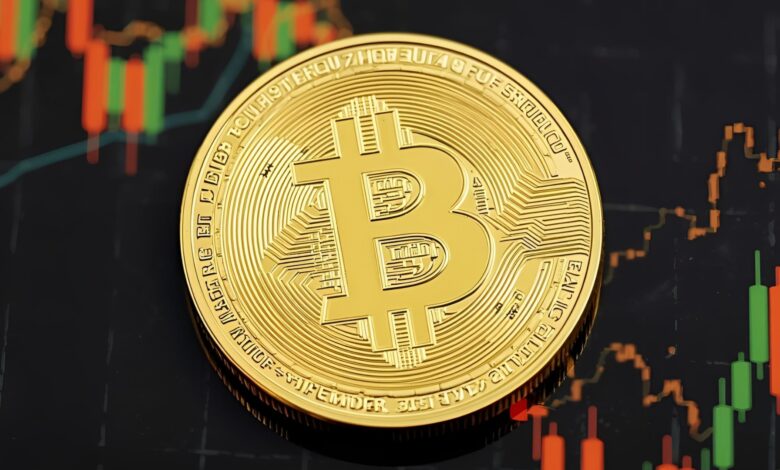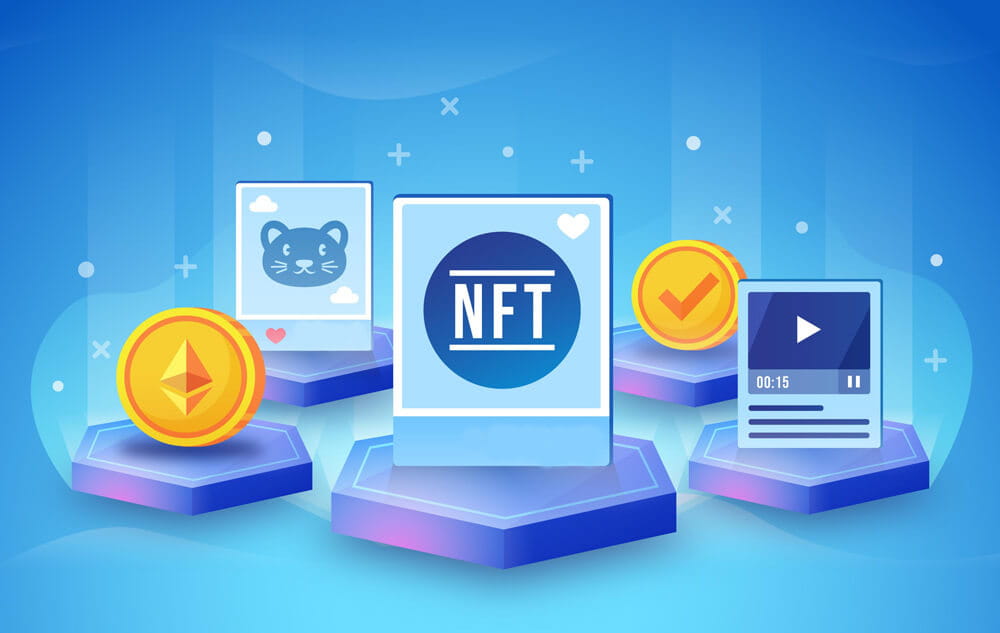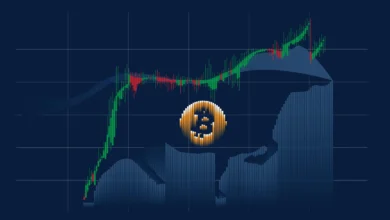
Master Bitcoin Futures Trading From Basics to Profits
Bitcoin futures trading stands as one of the most powerful—and risky—tools for savvy traders. While spot trading merely involves buying and selling the actual asset, futures allow participants to speculate on Bitcoin’s price direction, leverage their position, hedge exposure, or gain from both bullish and bearish cycles. Because futures trading doesn’t require physical ownership of BTC, it opens doors to more flexible strategies and potentially higher returns—though also higher risks.
This article dives deep into the domain of Bitcoin futures trading, explaining how it works, the various contract types, major platforms, strategies, risk-management techniques, and practical tips. Throughout, you’ll find LSI keywords and related phrases like “BTC futures contracts,” “cryptocurrency derivatives,” “leverage trading,” “perpetual contracts,” and “margin trading,” which help contextualize and reinforce the core concept. Our objective: to produce a unique, human-readable, SEO-friendly guide that positions you to understand and perhaps engage in futures trading with a grounded perspective.
What Are Bitcoin Futures and How Do They Work
Definition & Purpose of Bitcoin Futures Trading
A Bitcoin futures contract is a standardized agreement between two parties to buy or sell Bitcoin at a predetermined price (the futures price) on a specific future date. In essence, it’s a derivative instrument: its value is derived from the underlying asset (Bitcoin). Hence, Bitcoin futures trading allows one to gain exposure to BTC’s price movements without taking custody of the actual coin.
Traders use futures to speculate, hedge, or leverage their position. Instead of buying Bitcoin outright, a futures contract lets you lock in a price or take a directional bet, betting that the price will rise (long) or fall (short).
Key Differences vs. Spot Bitcoin Trading
Unlike spot trading, where you own the BTC and hold it in wallets or exchanges, futures trading deals purely in contracts. You don’t need to worry about blockchain transfers, wallets, or custody risks. But you do face additional factors:
-
Leverage & margin requirements: Futures let you control a larger notional amount of Bitcoin with a smaller capital outlay (initial margin).
-
Expiry or perpetual nature: Some futures have expiration dates (delivery or cash-settled), while others are perpetual (no expiry).
-
Funding costs / settlement mechanics: Especially for perpetuals, a funding rate mechanism helps tether futures prices to the underlying spot price.
-
Liquidation risk: Because of leverage, adverse price moves can wipe out your margin and trigger automatic liquidation.
-
No asset ownership: You can’t withdraw Bitcoin; your capital moves in and out of your futures or margin account.
The power of leverage and versatility attract many traders. But mastery demands close attention to contract structure and risk dynamics.
Types of Bitcoin Futures Contracts

Delivery (Quarterly / Monthly) Futures
Delivery futures, sometimes called traditional futures, carry a fixed expiration date. At that date:
-
The contract may settle in cash (i.e., no actual Bitcoin changes hands) or deliver BTC (in physically settled variants).
-
Traders who hold a contract until expiry must settle according to the contract terms.
-
Because of this, these contracts avoid perpetual funding fees, but they introduce roll cost risk (needing to roll into new contracts as old ones expire).
These are often used by institutional players seeking directional exposure over a fixed term or hedgers looking to manage risk over a defined window.
Perpetual Futures (aka Perpetual Swaps)
Perpetual futures (or perpetual swaps) are the dominant form of BTC futures trading on most crypto exchanges. Their hallmark traits:
-
No expiry date: You can hold positions indefinitely (subject to margin).
-
Funding mechanism: To keep futures price aligned with spot, longs or shorts pay periodic funding fees (usually every 8 hours). If more traders are long, longs pay shorts; if more short, shorts pay longs.
-
Continuous trading: You don’t have to worry about rollover risk.
-
High liquidity and flexibility: Very popular among day traders and swing traders alike.
Because perpetuals are most accessible and flexible, they capture much of the daily volume in Bitcoin derivatives markets.
Micro and Mini Futures Contracts
Some platforms offer smaller contract sizes (micro or mini futures) to suit novice traders or those with limited capital. For example, a Micro Bitcoin Futures contract might represent 1/50th of a standard contract’s face value. These smaller contracts allow finer control over position sizing and reduce risk of over-leveraging.
Mechanics of Bitcoin Futures Trading
Margin & Leverage
One of the most compelling features of Bitcoin futures trading is leverage. With margin, you only need to put up a fraction of the notional contract value to open a position. For instance, with 10× leverage, a $1,000 margin can control $10,000 in BTC futures.
However, higher leverage amplifies both gains and losses. A sudden adverse move can rapidly erode margin and lead to liquidation. Exchanges specify initial margin (required to open a trade) and maintenance margin (minimum to keep the trade alive). If your balance drops below maintenance margin, your position is at risk of forceful liquidation.
Funding Rates and Settlement
In a perpetual contract, funding rates are the glue tying futures price to spot. Every 8 hours (or a fixed schedule), long or short traders pay or receive funding depending on market imbalance.
For example, if most traders are long, the funding rate might be positive, making longs pay shorts. This incentivizes equilibrium. Because of this, perpetuals drift toward spot price over time. For delivery futures, the settlement is either in stablecoins (cash-settled) or in BTC (physical delivery). The settlement process depends on the exchange and contract terms.
Open Interest, Liquidity, and Price Discovery
Open interest is the total number of outstanding contracts that have not been settled. Tracking open interest offers insight into how many active bets exist in the futures book. High open interest suggests strong participation and liquidity. Because futures markets often lead spot markets in big moves, many traders track futures metrics to anticipate price direction.
Mark Price & Liquidation
Exchanges use a mark price (or fair price) to calculate unrealized profit & loss and to determine liquidations. This prevents manipulation in illiquid or volatile markets. If the mark price pushes your margin below maintenance, the exchange will liquidate your position. Setting stop-loss orders can help moderate this risk.
Advantages and Risks of Bitcoin Futures Trading
Advantages
-
Leverage magnifies capital efficiency: You can control larger exposure with minimal capital, potentially enhancing returns.
-
Bidirectional profit potential: You can profit by going long (price rises) or going short (price falls).
-
Hedging tools: For holders of BTC, futures allow hedging against downside risk.
-
No custody or wallet concerns: You engage through contracts, eliminating worries about private keys or wallet security.
-
Deep liquidity and tight spreads: Major exchanges provide robust liquidity, reducing slippage.
Risks
-
Liquidation risk: Poor risk management or excessive leverage can wipe out your margin fully.
-
Funding costs: For perpetuals, funding rates can erode profits over time.
-
Volatility spikes: Sudden price swings may trigger margin calls and slippage.
-
Counterparty and exchange risk: Choose reliable platforms; fraudulent or insecure exchanges can pose risks.
-
Psychological stress: Futures trading demands constant discipline, especially with leveraged positions.
Academic research underscores the complexity of hedging in futures markets: optimal hedging strategies balance variance of returns against liquidation risk. Also, the introduction of regulated Bitcoin futures has been shown to increase spot volatility and trading volume.
How to Start Bitcoin Futures Trading — Step by Step

Choose a Reputable Futures Exchange
Selecting a trustworthy exchange is essential. Look for strong security, transparent rules, competitive fees, and good liquidity. Options include regulated exchanges (e.g. CME Group) and crypto exchanges (e.g. Binance, Bybit, OKX). For institutional or regulated exposure, CME’s cash-settled BTC futures offer regulatory safety. For retail traders, crypto derivatives platforms provide access, tools, and high leverage.
Create Account & Fund It
Registering requires identity verification (KYC) in many regulated platforms. After approval, deposit funds—often stablecoins like USDT or USD in regulated settings. Some exchanges also let you deposit BTC or USD directly.
Select a Futures Contract
Decide whether to trade perpetual or expiry-based contracts. Choose appropriate contract size (full, mini, micro). Also choose leverage that aligns with your risk tolerance.
Place a Trade — Go Long or Short
To place a trade, you choose direction: long when expecting price will rise, short when expecting price to fall. You’ll specify parameters like entry price, leverage, margin, and maybe limit or market orders.
Monitor and Manage the Trade
Because futures positions are sensitive, actively monitor them. Use stop-loss and take-profit orders to lock in gains and limit losses. Track funding rates, open interest, and margin levels. Adjust positions or close early to manage risk.
Exit or Roll Over (if using expiry contracts)
If you’re trading delivery futures, you’ll need to exit before expiry or roll into the next contract. For perpetuals, simply closing your position ends the contract.
Proven Strategies in Bitcoin Futures Trading
Trend-Following Breakout Strategy
A popular method is to follow momentum: when price breaks above recent highs (resistance) or below recent lows (support), you initiate a trade. With Bitcoin’s volatility, breakouts can lead to strong directional moves. One study simulated a breakout system on BTC futures, showing meaningful net profits when combined with risk controls.
For example, on a 5-minute chart, you may buy when price breaks above the prior session’s high and then trail a stop-loss. Meanwhile, during bearish conditions, shorting below prior lows can work.
Mean Reversion Strategy (for Range Markets)
If BTC futures is trading in a range, mean reversion can be effective: buy near lower support boundary, sell short near resistance. This style relies on constraining drawdowns and watching for breakouts that break the range.
Carry / Funding Rate Arbitrage
In perpetuals, you can try to profit from funding rate differentials. If funding rate is highly negative, short positions may “earn” funding payments. Conversely, if funding is highly positive, longs may receive net payments. Some advanced traders engage in arbitrage between futures and spot or between different exchanges.
Hedging & Spread Trades
If you hold spot BTC, you may hedge with futures by shorting equivalent exposure. Or you can employ calendar spreads — buying longer-duration futures while shorting nearer ones — to bet on contango or backwardation dynamics. Whatever the strategy, prudent risk management is crucial: limit leverage, diversify entries, enforce stop-losses, and never risk more than you can afford to lose. Choosing the Right Platform: What to Look For
When selecting a platform for Bitcoin futures trading, consider these key aspects:
-
Regulation & reputation: Regulated exchanges (e.g. CME) offer added safety; unregulated ones may offer more leverage but higher risk.
-
Liquidity & volume: Deep order books and high liquidity ensure tighter spreads, lower slippage, and reliable execution.
-
Fee structure: Watch for funding rates, taker-maker fees, rollover costs, and other hidden charges.
-
Leverage limits: Determine how much leverage you can access—some platforms offer up to 125× or more.
-
Risk controls & tools: Features such as cross margin, isolated margin, stop-loss, trailing stops, liquidation alerts, and margin calculators matter.
-
Transparency of mark/settlement price: Use of fair mark pricing helps reduce manipulation, especially in volatile periods.
-
User experience & tools: The trading interface, charting tools, APIs, and speed all contribute heavily to your effectiveness.
Top platforms like Binance, Bybit, OKX, and others dominate derivatives volume globally. Meanwhile, CME remains a trusted regulated option, especially for institutional participants.
Risk Management: Staying Alive in Futures Markets
Because Bitcoin futures trading involves leverage, the potential for rapid losses is real. To survive and thrive, robust risk management is nonnegotiable. First, set clear risk-per-trade limits, such as risking only 1–2% of your capital per position. Use stop-loss orders to enforce discipline, rather than relying on emotion. Continuously monitor your margin utilization, and keep buffer capital to resist margin calls.
Avoid overleveraging—even if the platform allows 100× or more, such magnification often leads to frequent liquidation. Use lower leverage or smaller contract sizes when testing strategies. Correlate your futures exposure with your overall portfolio. If you already have crypto exposure, speculative futures bets should be sized modestly. Finally, maintain psychological discipline: stick to your plan, resist chasing trades, and review losing trades to learn rather than margin back impulsively.
Market Trends, Institutional Flow & the Future of Bitcoin Futures
In 2025, Bitcoin futures markets are no longer niche or fringe; they play a central role in price discovery, institutional hedging, and market liquidity. Big flows into BTC ETFs and derivatives underscore how futures markets influence spot trends.
As institutions increasingly use BTC futures, markets become more efficient but also more reactive to macro signals, regulation announcements, and funding rate dynamics. We may also see futures-linked products evolve—such as structured notes, crypto derivatives platforms with more complex risk protocols, and integrations between futures and DeFi.
As spot Bitcoin ETFs proliferate, some futures-based instruments may adapt or phase out (for example, some futures ETFs winding down in favor of spot ones). Yet for active traders, Bitcoin futures trading remains indispensable for volatility-based strategies and hedging.
Common Mistakes to Avoid in Bitcoin Futures Trading
Over the years, traders have made recurrent errors in futures. First, overleveraging is perhaps the most lethal: aggressive leverage magnifies mistakes. Second, ignoring funding rates in perpetual contracts can erode returns unexpectedly.
Third, failing to use stop-loss or margin risk controls often leads to avoidable liquidation. Fourth, poor platform selection—trading on low-liquidity or untrustworthy exchanges—can expose you to slippage, downtime, or worse. Fifth, emotional overtrading—chasing losses or revenge-trading—typically destroys discipline. Always maintain a trading plan, backtest strategies, monitor real-time metrics like open interest and funding rate, and scale exposure gradually.
Also Read: Revolutionary Bitcoin Futures Trading Platform Gains 300% Users
Conclusion
Bitcoin futures trading offers a compelling gateway to gain leveraged exposure to BTC’s price action without owning the underlying asset. Through perpetual contracts, delivery futures, or micro contracts, traders can go long or short, hedge existing positions, and amplify returns. Yet this power comes with real peril—liquidation risk, funding cost drain, volatility shocks, and platform risk.
Success in Bitcoin futures trading requires deep understanding of mechanics—margin, settlement, funding rates—plus disciplined risk management, thoughtful platform selection, and adaptable strategy design. The landscape continues to evolve as institutional participation grows and regulatory frameworks change, but for those willing to learn carefully, futures remain among the most dynamic arenas in crypto markets. If you approach futures with caution, proper sizing, and consistency, Bitcoin futures trading can be a valuable tool in your trading toolkit.
FAQs
Q: What’s the difference between Bitcoin futures and Bitcoin options?
Bitcoin futures obligate both parties to transact at a set price on expiry; options give the buyer the right (but not obligation) to buy or sell at strike. Options cost a premium; futures do not. Thus, futures tend to offer more directional exposure, but with higher risk of liquidation.
Q: Can beginners trade Bitcoin futures?
Yes, beginners can start using small capital and low leverage, especially via micro futures or demo accounts. However, mastering futures mechanics, margin, and risk control is essential before scaling.
Q: How do funding rates affect my profit in perpetual futures?
Funding rates are periodic payments between long and short traders. If you’re on the side paying funding, your profits can be eaten into; conversely, if you’re on the receiving side, you can gain extra yield. Always monitor funding when holding long-term positions.
Q: Are regulated futures exchanges safer than crypto exchanges?
Generally yes: regulated platforms often enforce stricter standards, transparency, and counterparty protections. That said, many crypto exchanges are highly secure. One should vet reputation, audit record, and insurance policies.
Q: How do academical studies view hedging and risk in Bitcoin futures?
Research suggests that optimal hedging with BTC futures balances variance reduction with liquidation risk—i.e. overly aggressive hedging can trigger liquidation even if variance is minimized. Also, the introduction of regulated Bitcoin futures has been found to increase both volume and volatility in spot markets.







